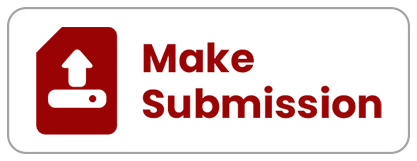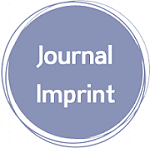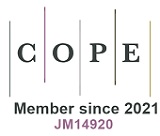COVID-19 Perceptions: Applying the Health Belief Model
Downloads
Doi:10.28991/SciMedJ-2021-0304-4
Full Text:PDF
Downloads
World Health Organization, WHO. Novel Coronavirus–China. (2020). Available online: https://www.who.int/csr/don/12-january-2020-novel-coronavirus-china/en/. (accessed 17 May 2020).
Chen, Y., Liu, Q., & Guo, D. (2020). Emerging coronaviruses: Genome structure, replication, and pathogenesis. Journal of Medical Virology, 92(4), 418–423. doi:10.1002/jmv.25681.
World Health Organization, WHO. WHO Director-General's opening remarks at the media briefing on COVID-19- March 11 2020. Available online: https://www.who.int/dg/speeches/detail/who-director-general-s-opening-remarks-at-the-media-briefing-on-covid-19---11-march-2020. (accessed on May 2020).
Kwok, K. O., Li, K. K., Chan, H. H. H., Yi, Y. Y., Tang, A., Wei, W. I., & Wong, S. Y. S. (2020). Community Responses during Early Phase of COVID-19 Epidemic, Hong Kong. Emerging Infectious Diseases, 26(7), 1575–1579. doi:10.3201/eid2607.200500.
Witte, K., & Allen, M. (2000). A Meta-Analysis of Fear Appeals: Implications for Effective Public Health Campaigns. Health Education & Behavior, 27(5), 591–615. doi:10.1177/109019810002700506.
Munro, S., Lewin, S., Swart, T., & Volmink, J. (2007). A review of health behaviour theories: how useful are these for developing interventions to promote long-term medication adherence for TB and HIV/AIDS BMC Public Health, 7(1). doi:10.1186/1471-2458-7-104.
Hochbaum, G., (1970). Health Behavior. Belmont, CA: Wadsworth Publishing.
Maiman, L. A., Becker, M. H., Kirscht, J. P., Haefner, D. P., & Drachman, R. H. (1977). Scales for Measuring Health Belief Model Dimensions: A Test of Predictive Value, Internal Consistency, and Relationships among Beliefs. Health Education Monographs, 5(3), 215–231. doi:10.1177/109019817700500303.
Glanz, K., & Bishop, D. B. (2010). The Role of Behavioral Science Theory in Development and Implementation of Public Health Interventions. Annual Review of Public Health, 31(1), 399–418. doi:10.1146/annurev.publhealth.012809.103604.
Orji, R., Vassileva, J., & Mandryk, R. (2012). Towards an Effective Health Interventions Design: An Extension of the Health Belief Model. Online Journal of Public Health Informatics, 4(3). doi:10.5210/ojphi.v4i3.4321.
Rubin, G. J., Amlot, R., Page, L., & Wessely, S. (2009). Public perceptions, anxiety, and behaviour change in relation to the swine flu outbreak: cross sectional telephone survey. BMJ, 339(jul02 3), b2651–b2651. doi:10.1136/bmj.b2651.
Lau, J. T. F. (2003). Monitoring community responses to the SARS epidemic in Hong Kong: from day 10 to day 62. Journal of Epidemiology & Community Health, 57(11), 864–870. doi:10.1136/jech.57.11.864.
Tang, C. S., & Wong, C. (2004). Factors influencing the wearing of facemasks to prevent the severe acute respiratory syndrome among adult Chinese in Hong Kong. Preventive Medicine, 39(6), 1187–1193. doi:10.1016/j.ypmed.2004.04.032.
Li, J.-B., Yang, A., Dou, K., Wang, L.-X., Zhang, M.-C., & Lin, X.-Q. (2020). Chinese public’s knowledge, perceived severity, and perceived controllability of COVID-19 and their associations with emotional and behavioural reactions, social participation, and precautionary behaviour: a national survey. BMC Public Health, 20(1). doi:10.1186/s12889-020-09695-1.
Atchison, C. J., Bowman, L., Vrinten, C., Redd, R., Pristerà, P., Eaton, J. W., & Ward, H. (2020). Perceptions and behavioural responses of the general public during the COVID-19 pandemic: A cross-sectional survey of UK Adults. doi:10.1101/2020.04.01.20050039.
World Health Organization, WHO Health Emergency Dashboard WHO (COVID-19). Available online: https://covid19.who.int/region/emro/country/sd. (accessed on 16 Mar 2021).
Hollister, M. C., & Anema, M. G. (2004). Health behavior models and oral health: a review. American Dental Hygienists' Association, 78(3), 6-6.
Internet live stats. Sudan Inernet Users. Available online: https://www.internetlivestats.com/internet-users/sudan/. (accessed on 17 May 2020).
World Health Organization, WHO. Coronavirus disease (COVID-19) advice for the public. Available online: https://www.who.int/emergencies/diseases/novel-coronavirus-2019/advice-for-public. (accessed on May 2020).
Merzel, C., & D’Afflitti, J. (2003). Reconsidering Community-Based Health Promotion: Promise, Performance, and Potential. American Journal of Public Health, 93(4), 557–574. doi:10.2105/ajph.93.4.557.
Bandura, A. (1977). Self-efficacy: Toward a unifying theory of behavioral change. Psychological Review, 84(2), 191–215. doi:10.1037/0033-295x.84.2.191.
Mukhtar, S. (2020). Mental health and emotional impact of COVID-19: Applying Health Belief Model for medical staff to general public of Pakistan. Brain, Behavior, and Immunity, 87, 28–29. doi:10.1016/j.bbi.2020.04.012.
Anagnostopoulos, F., Buchanan, H., Frousiounioti, S., Niakas, D., & Potamianos, G. (2011). Self-efficacy and Oral Hygiene Beliefs about Toothbrushing in Dental Patients: A Model-guided Study. Behavioral Medicine, 37(4), 132–139. doi:10.1080/08964289.2011.636770.
Baghiani Moghadam, M. H., Mozaffarian Azad, M., Biria, M., & Sabour, S. (2019). Evaluation of oral hygiene care of under 4 years old children by their mothers based on the Health Belief Model. Journal of Dental School, Shahid Beheshti University of Medical Sciences, 33(1), 9-18. doi:10.22037/jds.v33i1.24738.
Zetu, L., Zetu, I., Dogaru, C. B., Duţă, C., & Dumitrescu, A. L. (2014). Gender Variations in the Psychological Factors as Defined by the Extended Health Belief Model of Oral Hygiene Behaviors. Procedia - Social and Behavioral Sciences, 127, 358–362. doi:10.1016/j.sbspro.2014.03.271
Leung, G. M. (2003). The impact of community psychological responses on outbreak control for severe acute respiratory syndrome in Hong Kong. Journal of Epidemiology & Community Health, 57(11), 857–863. doi:10.1136/jech.57.11.857.
Bults, M., Beaujean, D. J., de Zwart, O., Kok, G., van Empelen, P., van Steenbergen, J. E., … Voeten, H. A. (2011). Perceived risk, anxiety, and behavioural responses of the general public during the early phase of the Influenza A (H1N1) pandemic in the Netherlands: results of three consecutive online surveys. BMC Public Health, 11(1). doi:10.1186/1471-2458-11-2.
Sharot, T. (2011). The optimism bias. Current Biology, 21(23), R941–R945. doi:10.1016/j.cub.2011.10.030.
Bavel, J. J. V., Baicker, K., Boggio, P. S., Capraro, V., Cichocka, A., Cikara, M., … Willer, R. (2020). Using social and behavioural science to support COVID-19 pandemic response. Nature Human Behaviour, 4(5), 460–471. doi:10.1038/s41562-020-0884-z.
Witte, K., & Allen, M. (2000). A Meta-Analysis of Fear Appeals: Implications for Effective Public Health Campaigns. Health Education & Behavior, 27(5), 591–615. doi:10.1177/109019810002700506.
- This work (including HTML and PDF Files) is licensed under a Creative Commons Attribution 4.0 International License.












